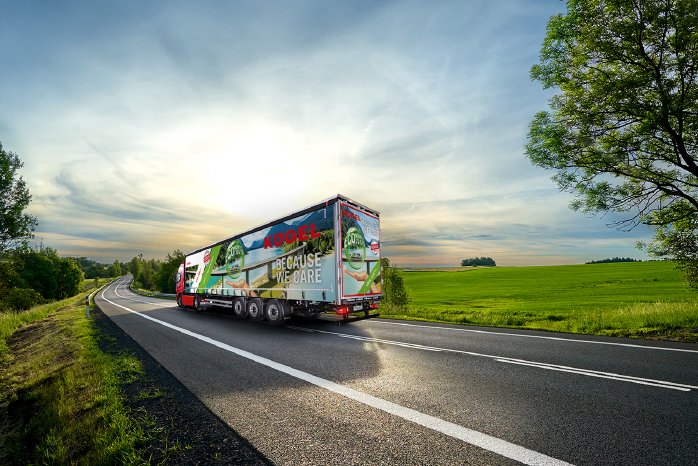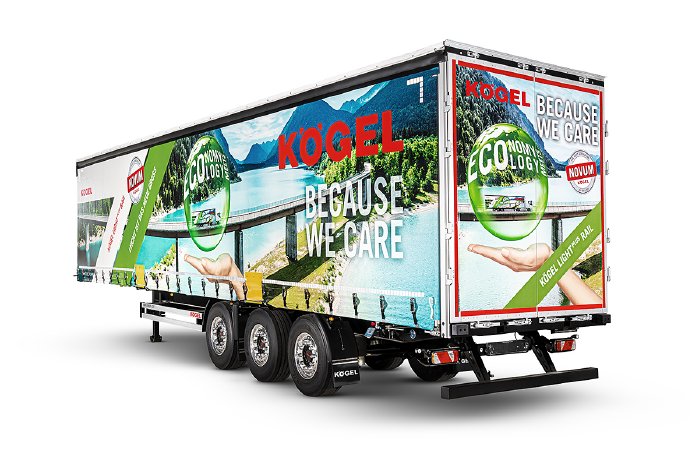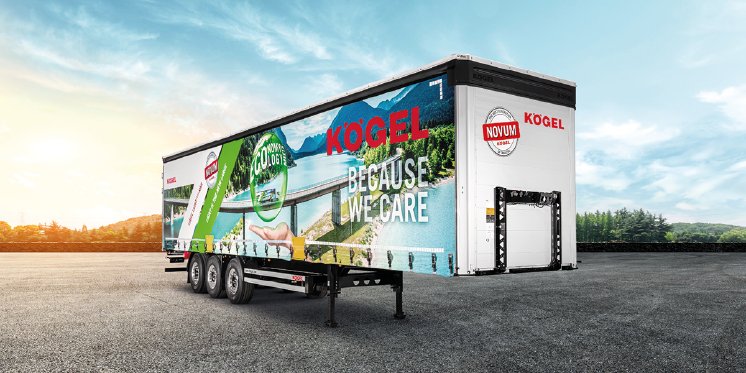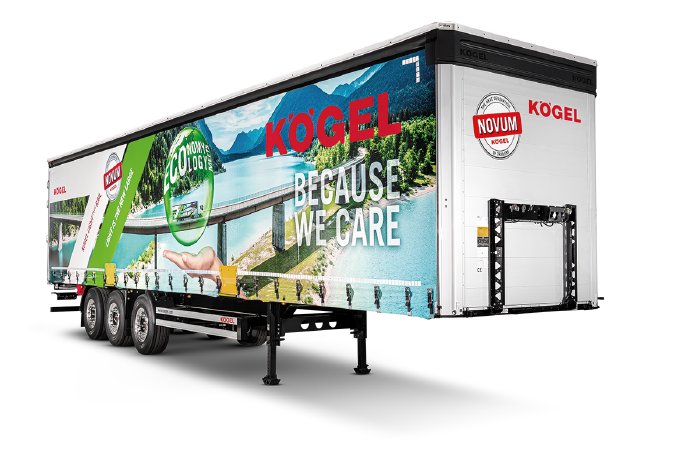Kögel will present the first rail-loadable trailer in a lightweight construction at the IAA Transportation 2022. The Kögel Lightplus Rail offers a weight advantage of up to a ton compared with comparable standard versions, and thus combines the economical and ecological benefits of lightweight trailers using environmentally friendly rail transport.
To achieve this, Kögel developers fundamentally revised the frame of the Kögel Cargo Rail and based the design on lightweight trailers from the Lightplus series. They succeeded in reducing the tare weight of the trailer significantly while retaining the same high load-bearing capacity by using high-strength steels, in particular, which provided the opportunity to reduce material thicknesses specifically.
300 kilograms lighter than the standard model, even with the basic equipment
With the basic equipment, the Kögel Lightplus Rail weighs 6,060 kilograms, making it 300 kilograms lighter than the standard version of the Kögel Cargo Rail. This model is thus already one of the lightest trailers in its class, and weighs approximately 200 kilograms less than comparable trailers by competing manufacturers. With optional lightweight features such as aluminium wheel rims, air tanks and landing gear, the tare weight of the Lightplus Rail can be further reduced down to 5,750 kilograms.
An exceptional benefit as rail-loadable trailers are typically much heavier than road-only trailers. This is thanks to the specially reinforced mounts of the combined transport trailers so that a crane can pick up the trailer at four points and lift it into the pocket wagon at the container terminal.
Low tare weight enables tangible fuel savings
However, the higher tare weight reduces the payload of the trailer. Exceptions apply to trailers in combined transport, allowing an increase in the permissible total rail weight up to 44 tons between the loading and unloading point and the nearest railway station, to compensate for this disadvantage. Nevertheless, this provision does not compensate for the increased fuel consumption of the tractor unit on the road, which is caused by the additional weight.
Thanks to its low tare weight, the Kögel Lightplus Rail not only offers more payload on the road, but saves diesel and reduces the CO2 footprint associated with the trailer’s fuel consumption. According to independent sources, diesel savings of 0.6 l/100 km are possible per ton of weight reduction[1]. Preliminary calculations with VECTO (Vehicle Emission Calculation Tool), the European Commission’s simulation tool for calculating the CO2 emissions and fuel consumption of heavy commercial vehicles, confirm these claims.
Suitable for conventional pocket wagons, even with the basic equipment
Despite the lightweight construction, customers need not compromise on the versatility or handling of the trailer. The trailer has no disadvantages compared to conventional rail designs. Even with the basic equipment, the trailer is suitable for use with conventional pocket wagon types c, e, f, g, h and i. On request, the Lightplus Rail is available with a folding gas spring-supported underride guard. This creates the necessary clearance to allow loading on pocket wagon types a and d.
Thanks to Kögel’s modular system, all the equipment variants of the Cargo Rail are also available for the Lightplus Rail. These include industry solutions with paper equipment or stake pockets for steel transport, as well as double codification with the FlexiUse body.
The exhibition trailer features the reinforced Strong & Go body, which allows form-locked loads such as beverages to be easily secured, and fulfils Daimler Directive 9.5 without lattices. Additionally, the trailer features the Kögel Trailer Axle KTA NOVUM in the Rail version, with a divided bellows for rail loading.
Exhibition trailer with OptiFlow aerodynamic fairing
Trade fair visitors can also view the OptiFlow Tail rear fairing on the Lightplus Rail. The system optimises the aerodynamic trailers, reducing the fuel consumption and CO2 emissions of the tractor unit by up to 1.1 l/100 km at high speeds.
[1]BASt Report, Issue F 103: “Technical Options for the Reduction of CO2 Emissions From Commercial Vehicles”, 2015)






